AMD is making a new addition to its midrange graphics
card lineup today with the introduction of the Radeon HD 4770 videocard, based
on the companies first 40nm GPU, the RV740.
The Radeon HD 4770
strikes a balance between performance and price, coming just under the
lucrative $100 mark and slotting in nicely in terms of performance between
existing Radeon 4670 and 4850 videocards.
ATI's new RV740 GPU is derived from the venerable RV770 core, but clocked at 750MHz and equipped GDDR5
memory that runs at an even 800MHz, giving it a memory bandwidth
of 51.2 GB/s. The memory bus on the Radeon HD 4770 is 128-bit
wide, which should make for an interesting comparison between it and the popular Radeon HD 4850. PCSTATS will break down all the numbers
in a moment, but first let's introduce the videocard sitting on the PCSTATS'
test bench today, the ASUS EAH4770
HTDI/512MD5/A.
ASUS' EAH4770 videocard is largely based off AMD's reference design, although it does
use a simpler two-slot wide aluminum heatsink in place of the standard ATI thermal
solution. It's not pretty but it is quiet, that's what matters most. The EAH4770
is PCI Express 2.0 x16 compliant, comes with 512MB of GDDR5 memory
and the usual list of supported features; ATI CrossfireX, HDCP, DX10.1,
SM4.1, and Unified Video Decoder 2 for HD content decoding. ASUS' EAH4770
HTDI/512MD5/A videocard retails for about $109USD / $130CDN / £60GBP at stores like Newegg and CanadaComputers.
Between NVIDIA's re-pricing of the Geforce GTS 250
videocard and the recent launch of the Radeon HD 4890
pushing prices
for older videocards even lower, the market for videocards in the $100-$150
price range is suddenly becoming very crowded. Adding another gladiator to the arena can
only make things more interesting, so of course PCSTATS is eager
to see how the ASUS EAH4770 videocard will compare to this year's mid-range
graphics cards and the titans of the previous generation.
It's a videocard war zone out there, let's see how much firepower AMD's
latest salvo has!
 |
|
Asus
EAH4770 GDDR5 512MB Videocard |
|
|
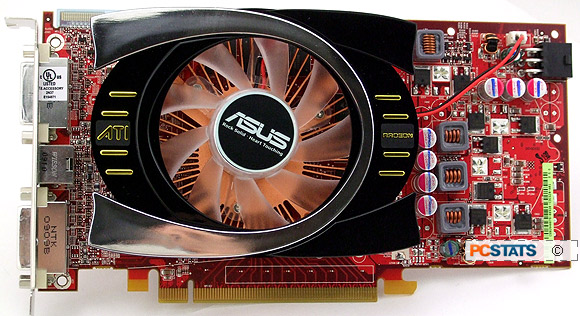
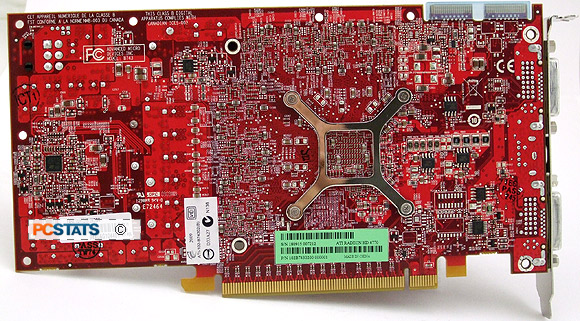
|
| Includes: |
|
User's Manual,
Driver CD, Utilities CD, DVI-to-HDMI Adapter, DVI-to-VGA adapter |
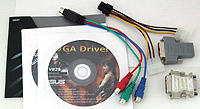 | | |
Introducing the ATI Radeon HD 4770
Most significantly, the Radeon HD 4770 'RV740' GPU is
manufactured on the 40nm process, making it the first GPU from nVidia or ATI to
be made with this process technology. 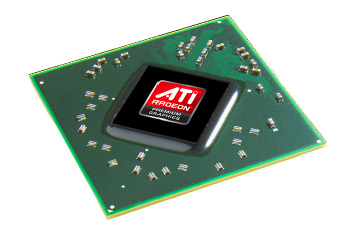 The GPU
itself contains 826 million transistors, and total board power sits around
80W. Smaller manufacturing processes improve power efficiency and to some extent allows the GPU to be
clocked higher without the lock-step increase in heat. Another benefit is that videocard manufacturers can
produce more GPUs from the same silicon wafer, which lowers production costs and
keeps the videocard affordable.
The GPU
itself contains 826 million transistors, and total board power sits around
80W. Smaller manufacturing processes improve power efficiency and to some extent allows the GPU to be
clocked higher without the lock-step increase in heat. Another benefit is that videocard manufacturers can
produce more GPUs from the same silicon wafer, which lowers production costs and
keeps the videocard affordable.
To really understand where the new ATI Radeon HD 4770 (RV740) graphics card
fit in, it's best to compare it directly against several existing
mainstream videocards. For although the new RV740 GPU is a direct descendent of
the RV770 from AMD's flagship Radeon HD 4870 and 4870 X2 graphics cards, much of
the original card's complex microarchitecture has been stripped down.
While the model numbers indicate that the Radeon HD 4770 is a series "below"
the Radeon HD 4850, the RV740 GPU is clocked at 750MHz, compared to 625MHz for
the Radeon HD 4850. The new Radeon HD 4770 is paired with GDDR5 memory operating
at 800MHz (effective speed: 3200MHz), so it has a higher data rate than the
GDDR3 RAM used with Radeon HD 4850 cards.
|
Videocard
Comparison Chart
|
|
AMD
Radeon HD 4550 |
AMD Radeon HD
4770 |
AMD Radeon HD
4830 |
AMD Radeon HD
4850 |
NVIDIA Geforce GTS
250 |
| GPU Code Name: |
RV710 |
RV740 |
RV770 |
RV770 |
G92+ |
| GPU Process: |
55nm |
40nm |
55nm |
55nm |
55nm |
| GPU Transistors: |
242 Million |
826
Million |
956 Million |
956 Million |
754 Million |
| Board Power: |
25W |
80W |
110W |
110W |
150W |
| GPU Core Clock Speed: |
600MHz |
750MHz |
575MHz |
625MHz |
738MHz |
| Memory Speed: |
800MHz(1600MHz GDDR3) |
800MHz(3200MHz GDDR5) |
900MHz(1800MHz DDR) |
993MHz(1986MHz DDR) |
1100MHz(2200 DDR) |
| Memory Capacity: |
256MB |
512MB
GDDR5 |
512MB GDDR3 |
512MB GDDR3
|
512MB GDDR3 |
| Memory bandwidth: |
12.8 GB/S |
51.2
GB/S |
57.6 GB/S |
63.5
GB/S |
70.4 GB/S |
| Stream Processors: |
80 |
640 |
640 |
800 |
128 |
| Texture units: |
8 |
32 |
32 |
40 |
64 |
| Raster Operators: |
4 |
16 |
16 |
16 |
16 |
| GFLOPS: |
96 |
960 |
736 |
1000 |
470 | | |
However the Radeon 4850 GPU still has more robust
architecture; 800 stream processors and a 40 texture units compared to the HD
4770 which has 640 stream processors and 32 texture units. Even the Radeon HD
4770's use of GDDR5 memory doesn't make it a clear winner on
specs alone, since it's limited to a 128-bit wide memory bus, whereas the Radeon
HD 4850 GDDR3 memory uses a 256-bit wide memory bus.
What all this means is that the RV740 GPU isn't quite as smart as the RV770
or NVIDIA's G92+, but it's not too far off.
The HD 4850 has more stream processors than the HD 4770
(800 vs 640), while the GTS250 makes use of more texture units and vertex
pipelines, which turns into greater shader processing and geometry rendering
power. 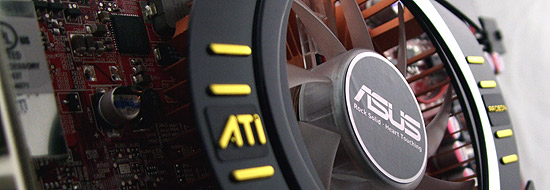 This means that games that feature complex special effects like distortion,
HDR lighting or reflections, or in games with especially complex geometry,
the Radeon HD 4770 won't get quite as much done each rendering
pass, although it does boast compute performance of 960GFLOPs.
This means that games that feature complex special effects like distortion,
HDR lighting or reflections, or in games with especially complex geometry,
the Radeon HD 4770 won't get quite as much done each rendering
pass, although it does boast compute performance of 960GFLOPs.
Altogether the new Radeon HD 4770 being unleashed today will likely process less
shader information in a single pass than the Radeon HD 4850, but
compensate for that by running through each pass more quickly. This should translate to
very close benchmark results between the two cards in shader-intensive games like Crysis, but there's no
need to speculate.
ASUS' EAH4770 videocard is sitting on the PCSTATS test bench right now, so
after a bit of overclocking and power testing we'll be able to see how this videocard
really stacks up.

